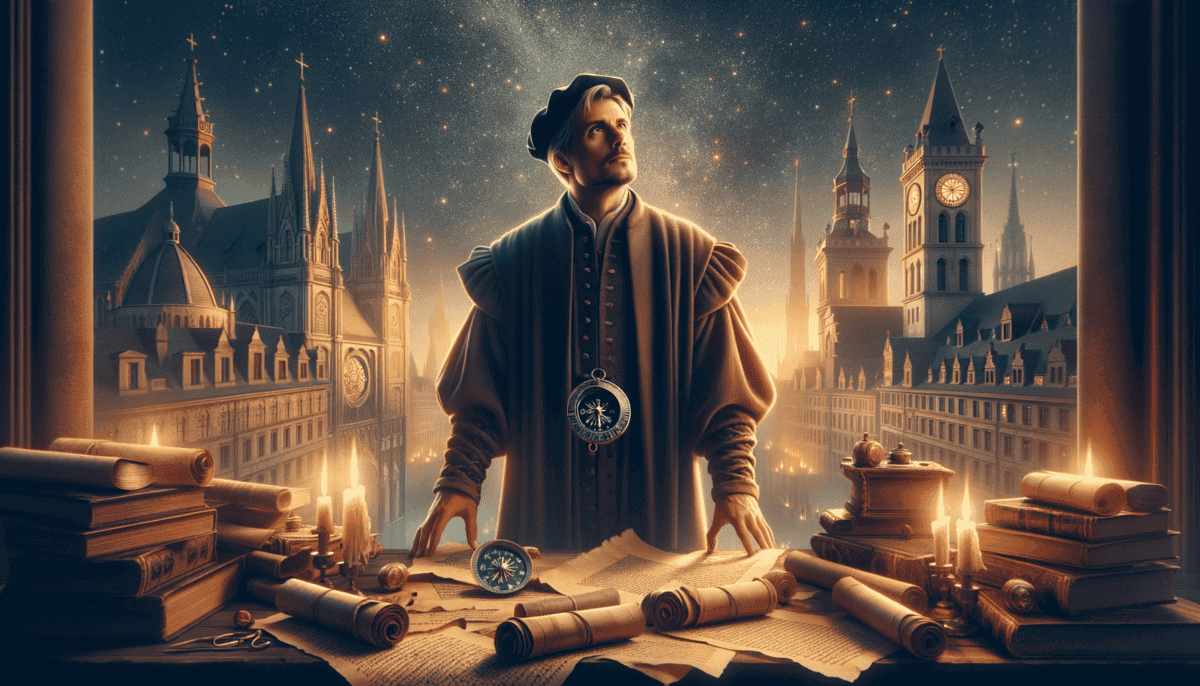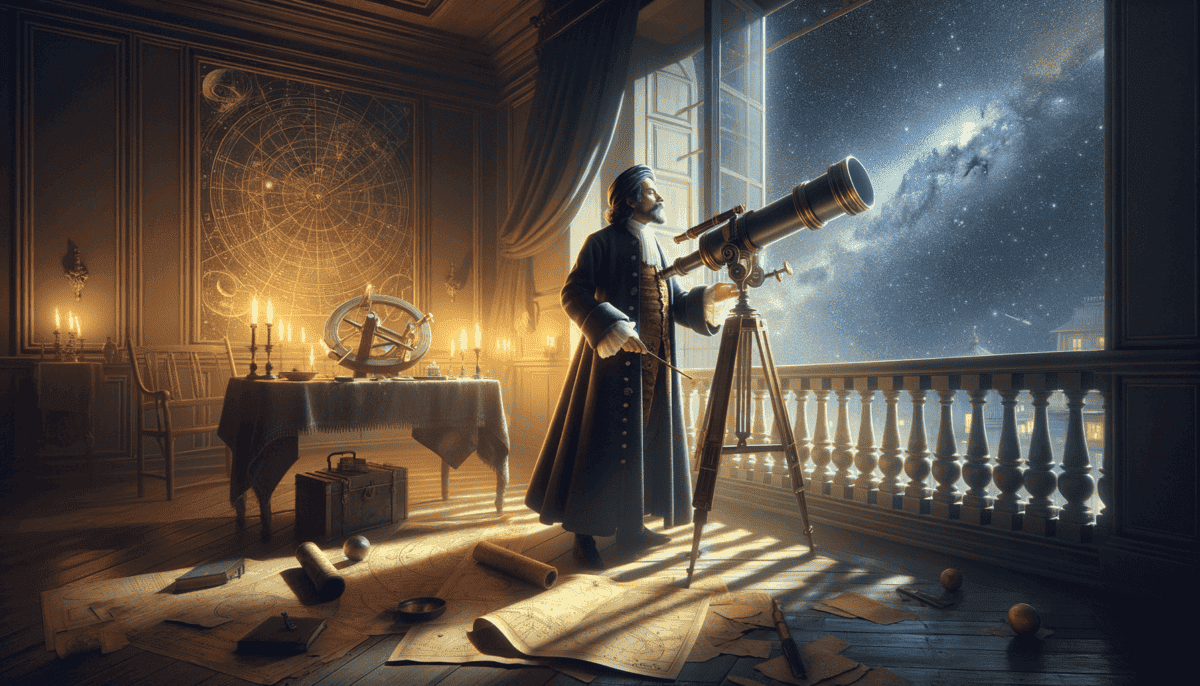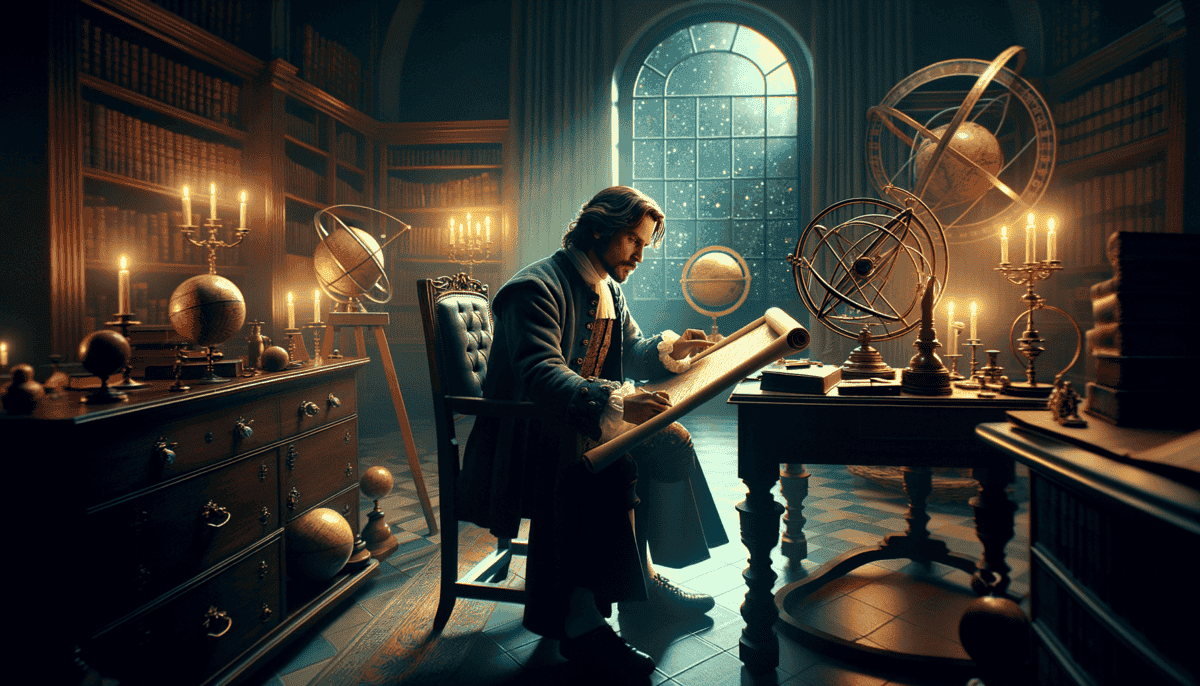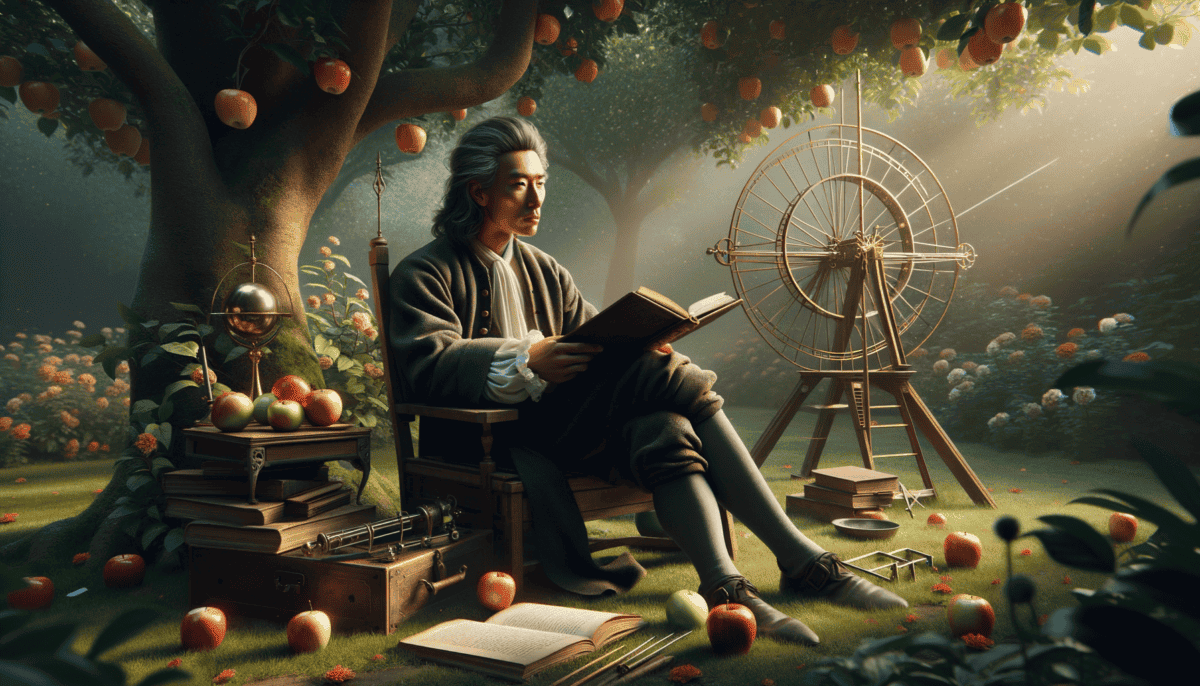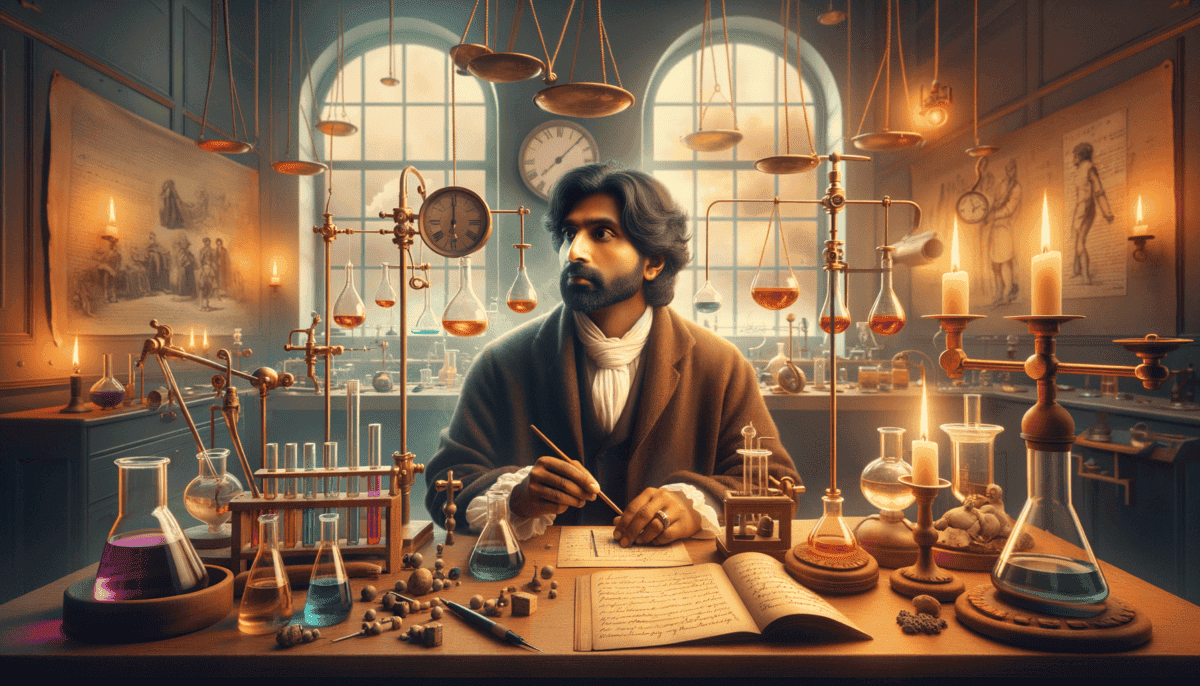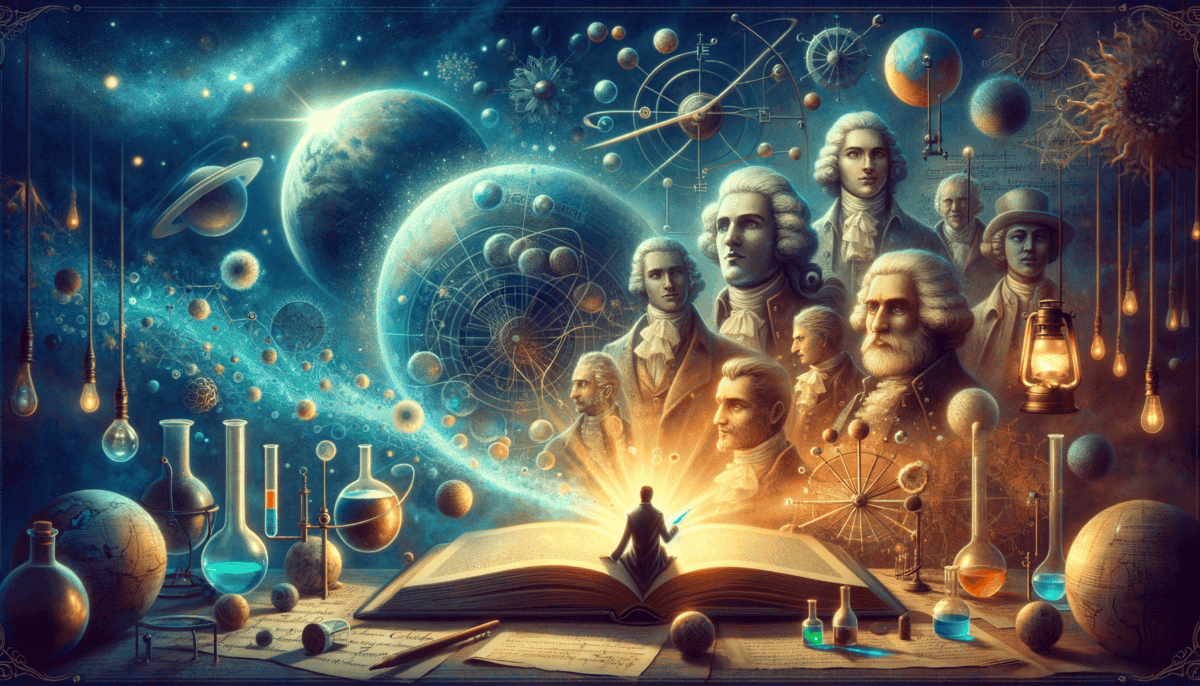The World Before Understanding
Little Marco peered through his bedroom window at the twinkling stars above. "Why do the stars move across the sky, Papa?" he asked, his eyes wide with wonder.
It was 1500 in the beautiful city of Toruń, Poland, and young Nicolaus Copernicus couldn't stop asking questions. His father smiled and ruffled his hair.
"The stars and planets all move around Earth, my son. That's what the wise men tell us. Earth is the center of everything."
But young Nicolaus wasn't so sure. He watched the sky night after night, making careful notes in his special book. The movements he saw didn't match what everyone said.
In those days, people believed many things that weren't true. They thought:
- Earth was the center of everything
- The sun, moon, and stars moved around us
- The sky was perfect and never changed
- Bad air caused sickness
- Magic could turn metal into gold
Young Nicolaus grew up to be a very smart man. He studied at the best schools and learned about the stars and planets. But something bothered him – the old ideas didn't make sense!
"Look here," he would say to his friend Georg, pointing at his charts. "If Earth is the center, why do the planets move so strangely?"
The Church and schools taught one way of thinking. Anyone who said different things could get in big trouble!
But Nicolaus was brave. He worked in secret for many years, writing down his new ideas. He thought the sun was at the center, and Earth moved around it!
"This is dangerous thinking," his friends warned. "You should keep these ideas to yourself."
At night, Nicolaus would climb to his tower and watch the sky. He used special tools to measure where the stars were. Each night, he wrote more in his big book.
Other smart people started to notice his work. Some agreed with him, but many were scared of new ideas. The world wasn't ready for such big changes.
One day, while watching Mercury cross the sky, Nicolaus made a decision. "I must share what I know," he said. "Even if people don't like it."
He worked harder than ever on his book. He called it "On the Revolutions of the Heavenly Spheres." It would change how people saw the whole universe!
Young Marco, who loved the stars so much, grew into the man who would help people understand their true place in space. He showed us that being brave enough to question old ideas can lead to amazing discoveries.
The stars still twinkled above, just as they had when he was a boy. But now, thanks to Nicolaus Copernicus, we were starting to understand their real dance through space.
More people were starting to look up at the sky with new eyes. They were beginning to ask their own questions. A new way of thinking was starting to grow, like a tiny seed that would soon become a mighty tree.
Stargazing and Rebellion
The sun was setting over Florence, Italy, as a curious man named Galileo carefully wrapped his new invention. It was 1609, and he had just made something amazing – a telescope that could see things far away!
“Papa, what are you looking at?” asked his daughter Virginia, watching him point the telescope at the night sky.
“The moon, my dear. And it’s not what everyone thinks it is!”
Every night, Galileo made new discoveries that changed how we see space:
- Mountains on the moon
- Spots on the sun
- Rings around Saturn
- Four moons circling Jupiter
- Many more stars than anyone could see before
“But this goes against everything we’ve been taught!” his friends warned. “The Church says heavenly things must be perfect!”
Galileo smiled and said, “Look through the telescope yourself. See what I see!”
Some people refused to even look. They were scared of finding out the old books might be wrong. But Galileo kept watching and learning.
He wrote about everything he saw. His books were exciting! People all over Europe read them and started asking questions too.
But not everyone was happy. The Church leaders got very angry. They said Galileo was wrong and dangerous.
“Stop teaching these ideas!” they ordered. “Or you’ll be in big trouble!”
Galileo tried to explain that his discoveries didn’t hurt anyone’s faith. “God gave us eyes to see and minds to understand,” he said. “Why shouldn’t we use them?”
One night, Virginia found her father looking sad. “What’s wrong, Papa?”
“They want me to say I was wrong about Earth moving around the sun,” he said. “But I know what I saw.”
Galileo had to make a hard choice. He could keep teaching what he knew was true and get in trouble, or say he was wrong to stay safe.
Finally, to protect his family, he told the Church leaders he was wrong. But the story says that after he did, he whispered very quietly: “And yet it moves.”
Even though Galileo had to stop teaching, his ideas didn’t go away. More and more people started using telescopes. They saw the same things he did. The truth about space was too big to hide!
Young scientists everywhere started asking more questions. They wanted to learn how the universe really worked. A new time of discovery was beginning, and nothing could stop it now!
The stars still shone brightly over Florence, just as they always had. But now, thanks to Galileo’s telescope and courage, people were starting to see them in a whole new way.
Mapping the Invisible
Johannes Kepler sat at his wooden desk, surrounded by stacks of numbers and charts. The candlelight flickered as he studied the paths of planets across the night sky.
“These circles just don’t match what we see,” he mumbled, running his hands through his messy hair.
“Master Kepler!” his young student Michael called out. “I brought more of Tycho’s star charts!”
Kepler’s eyes lit up. Tycho Brahe had been the best planet-watcher ever. His careful notes were like a treasure map to understanding the sky.
“Look here,” Kepler said, pointing to his drawings. “The planets move faster when they’re closer to the sun, and slower when they’re far away. Just like dancers spinning around a room!”
“But Master, why would God make planets move in ovals? Isn’t a circle more perfect?”
Kepler smiled. “The truth of nature is more beautiful than what we imagine it should be.”
He worked for twenty years to figure out three special rules about how planets move:
Kepler’s Big Discoveries:
• Planets move in oval paths
• They speed up near the sun
• The time they take to go around follows a special pattern
“But how can you be so sure?” other scientists asked.
Kepler held up his pages of math. “The numbers don’t lie. Look at Mars – every measurement matches perfectly!”
At night, Kepler would take breaks from his math to look at the stars. He imagined music playing as the planets danced around the sun.
“Each planet sings its own special note,” he wrote in his diary. “Together they make the music of the universe!”
Some people laughed at his ideas about space music. But they couldn’t argue with his math. His rules about planet motion were perfect!
“Master Kepler,” Michael asked one day, “how did you keep working when everyone said you were wrong?”
Kepler looked up at the sky. “Because the truth is written in numbers, not in old books. We just have to be patient enough to find it.”
Years later, when he finally finished his work, Kepler wrote: “I have followed the footprints of God in the sky.” ✨
The stars twinkled above his observatory, moving in their ancient paths. Thanks to Kepler, we now knew those paths weren’t perfect circles – and that made them even more wonderful.
The Laws of Motion
The autumn leaves rustled outside Isaac Newton’s window at Cambridge University. He sat alone in his study, surrounded by prisms, papers, and apple cores.
“Something pulls everything down,” he whispered, watching another apple fall from the tree outside. “But what makes it happen?”
“Master Newton!” called his friend Edmund Halley, bursting into the room. “Are you still hiding away with your experiments?”
Isaac looked up from his notes. “I’m trying to understand why things move the way they do. Look at this…”
He rolled a marble across his desk. “See how it keeps going until something stops it? That’s my first rule of motion!”
“Things keep moving unless something else makes them stop or change direction.”
Newton’s Big Ideas About Motion:
• Things stay still or keep moving unless pushed or pulled
• Bigger pushes make bigger changes in motion
• Every push has an equal push back
“But Isaac,” Edmund asked, “what does this have to do with the planets Kepler studied?”
Newton’s eyes sparkled. “Everything! The same force that pulls apples down keeps the moon going around Earth!”
He called this special force “gravity.” It was like an invisible rope that pulled everything toward everything else.
Some nights, Isaac would shine light through glass prisms, making beautiful rainbows on his wall.
“White light is really made of all the colors mixed together,” he told Edmund. “Just like big ideas are made of lots of little discoveries.”
Isaac spent many years writing his ideas in a big book. He was nervous about sharing them with other people.
“What if they laugh at my ideas?” he worried.
But Edmund encouraged him: “The world needs to know what you’ve found out!”
Finally, Newton published his book "Principia." It changed how everyone thought about motion and gravity forever!
People started using Newton’s rules to understand all kinds of things:
“Your work is amazing,” Edmund told him one evening. “How did you discover so much?”
Isaac smiled shyly. “If I have seen further than others, it is by standing on the shoulders of giants.”
The sun set outside his window, and Newton watched the stars appear. Thanks to his discoveries, people now understood that the same rules that worked on Earth also guided the dance of planets in space. ⭐
Chemistry’s Quiet Revolution
The morning sun streamed through the windows of Antoine Lavoisier’s Paris laboratory. Shiny glass bottles lined the shelves, and strange tools covered his workspace.
“Marie, look at this!” Antoine called to his wife. “When we heat this red powder, something magical happens!”
“It’s not magic, dear,” Marie smiled, picking up her notebook. “It’s chemistry. Let’s find out what’s really happening.”
Antoine was different from the old-time scientists called alchemists. They tried to turn metal into gold and kept their work secret. But Antoine wanted to understand what things were really made of.
“We must measure everything carefully,” Antoine always said. “Every tiny change matters!”
Antoine’s Amazing Discoveries:
• Nothing disappears when things burn – they just change form
• Air is made of different kinds of gases
• Water is made of two elements mixed together
“Watch this experiment,” Antoine said one day. He lit a candle and put a glass jar over it.
“The flame went out!” Marie noted. “But why?”
“The fire used up something in the air,” Antoine explained. “A special gas we need for burning – I call it oxygen!”
Some days, Antoine and Marie would weigh things before and after burning them.
“Look!” Marie exclaimed. “The ashes weigh more than the wood did!”
“Yes!” Antoine clapped. “Because they grabbed oxygen from the air while burning!”
Antoine wrote down all his ideas about chemistry in a special book. He gave things new names that made sense, like “oxygen” and “hydrogen.”
“The old names are like a strange language nobody uses anymore,” he said. “We need words that tell us what things really are!”
People started using Antoine’s careful way of doing experiments. They weighed everything and wrote down all the changes they saw.
Marie helped draw pictures that showed other scientists exactly how to do the experiments. She was great at explaining things clearly!
“You’ve changed how everyone thinks about chemistry,” Marie told him proudly.
Antoine smiled as he looked around their laboratory. “We’ve shown that science works best when we measure carefully and share what we learn.”
Outside their window, the sun set over Paris. Thanks to Antoine and Marie’s work, people were starting to understand the tiny changes happening all around them, every day. ⚗️
A Legacy of Discovery
The sun rose over London’s Royal Society, where scientists from all over Europe gathered to share their amazing discoveries.
“Can you believe how much we’ve learned?” whispered young Sarah, a student watching from the back. “The world is so different from what people thought just a few years ago!”
“Remember when people thought the Earth was the center of everything?” her teacher smiled. “Now we know we’re spinning around the sun, just like the other planets!”
“All these discoveries started because people were brave enough to ask questions and look for answers,” Sarah realized.
Inside the great hall, pictures of famous scientists lined the walls – Copernicus with his star maps, Galileo with his telescope, Newton with his prisms, and the Lavoisiers with their chemistry tools.
What Changed Forever:
• People learned to test their ideas with experiments
• They wrote down what they saw and shared it with others
• They used math to understand how things work
• They weren’t afraid to question old ideas
“Look at this new machine!” called out an excited scientist. “It can help us see tiny things we never knew existed!”
Sarah watched as people gathered around. Someone had brought a microscope that made small things look big.
Later that day, Sarah sat in the garden, thinking about all she had learned.
“The stars aren’t just lights in the sky – they’re huge, faraway suns!”
“Air isn’t just nothing – it’s made of tiny bits we can’t see!”
That evening, scientists from different countries shared their latest findings. Some had studied plants, others looked at rocks, and some watched the stars.
“We’re all part of something bigger,” Sarah thought. “Each discovery helps us understand our world better.”
The Scientific Revolution changed how people thought about everything. Instead of just believing what they were told, they learned to look for proof.
As the day ended, Sarah looked up at the stars twinkling in the dark sky. She thought about all the brave scientists who helped us understand our amazing universe.
“There’s still so much to learn,” she smiled. “And now we know how to look for answers!”
The Scientific Revolution had opened a door that would never close. People would keep asking questions, making discoveries, and sharing what they learned. The adventure of science was just beginning! ✨

